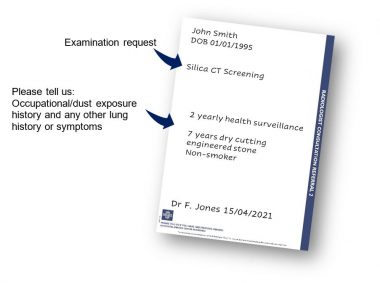Occupational Dust Diseases
Who is at risk?
- Engineered stone workers
- Stonemasonry (natural stone) and other processing of natural stone
- Workers in the construction industry (eg. concrete cutting, shotcreting, tunnelling, demolition)
- Workers in abrasive blasting, fire assay lab (ore sample crushing) and other industries (quarrying, mining)
- Workers in foundry casting
Medical practitioners are encouraged to adopt a very low threshold for investigating individuals who are at risk and to contact WorkSafe WA for the latest guidelines.



